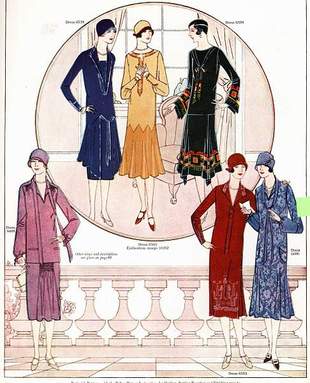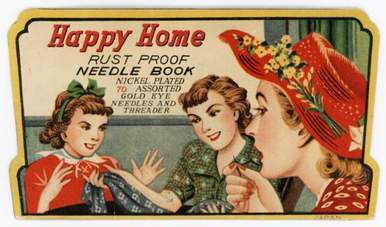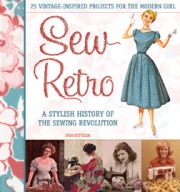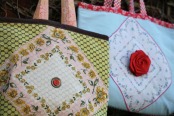In case you don’t know, sewing is what all the cool girls are doing now. This was most certainly not the case when I was 16, but sewing has made a transformation from dying art to hipster hobby. Today’s fabric is gorgeous, the patterns are fabulous, and the web sites and blogs devoted to sewing are crazy with inspiration and talent. To see other women (and young girls) embracing this activity I’ve always loved so much thrills me. But as I started to research my book, Sew Retro: A Stylish History of the Sewing Revolution + 25 Vintage-Inspired Projects for the Modern Girl, I realized sewing’s history has been a bumpy one—full of shady characters, narrow and problematic assumptions about women’s roles, and incredible flashes of talent. Let’s just say the needle and thread have been around the block a few times, and been rejected and embraced many times over in the last few centuries.
A good place to start is the invention of the modern sewing machine by Isaac Singer in the early 1850s. Other inventors had tried, but Singer was the first to make it work. The descriptions I’ve read of Singer characterize him as a bit of a ladies’ man, out for a quick buck and a cheap thrill (I’m guessing people locked up their liquor and their daughters when he came to town). Nonetheless, his engineering know-how made women’s lives so much easier. Of course, is it fair that women were stuck doing all the sewing, as well as taking care of the house and the kids, with no real say in the matter? Of course not. Nineteenth-century domesticity—for all its beautiful artifacts—was no picnic. But at least a sewing machine meant women didn’t have to take every stitch by hand. Commercial sewing patterns were introduced in the 1850s (Butterick produced the first sized patterns in 1863), and by the 1890s, patterns looked similar to how they look today (directions and pattern pieces inside an envelope).
By the 1920s, sewing was starting to wane because the ready-made garment industry was growing like crazy. A whole generation of swanky flappers realized that perhaps they didn’t have to sew anymore. Organizations like the Women’s Domestic Institute (led for many years by the amazing Mary Brooks Picken) tried to show women that their sewing skills had great commercial appeal. The Institute taught women to sew (via correspondence course) and helped thousands of women start small sewing-based businesses (if only Etsy were around then!).
As an industry, sewing wasn’t in danger of folding in the 1920s and 30s, but it was limping somewhat. We have this idea that everyone must have started sewing again during The Great Depression, which isn’t exactly true. People actually just made-do with less (and mended more). It was World War II that truly rejuvenated sewing. Women sewed for the war effort (coining the phrase “Sew for Victory!”), and they also learned the amazing art of repurposing old clothes into new things (since fabric was heavily rationed). By the mid 1940s, sewing was booming again; sales were way up, and Singer Sewing Centers popped up everywhere, wooing thousands of eager teenage girls (and on that note, thank goodness Singer himself wasn’t around anymore).
We like to think the 1950s were the golden age of sewing in America, and it was definitely the height of couture sewing (because pattern companies started partnering with famous designers to offer high-end style to middle-class women). But in reality, the numbers had already started to drop. It took until the 1960s for women to really rediscover sewing again. The hippy handcraft fad of the 1970s (think macramé) kept the momentum going.
But the 1980s? Forget about it. The “me” generation wasn’t interested. It wasn’t until the late 1990s that young women started digging out their grandmothers’ machines and bright young designers pushed fabric and pattern design into the 21st century. There were about 30 million home sewers in 1997, and by 2006, the number had jumped again: the last number I was able to find was 35 million American women sewing, as reported by the Home Sewing Association (an organization that doesn’t exist anymore).
What’s great about today is that women are free to sew or not sew, and to shape their own creative identities in any way they see fit. It’s that simple choice about our destiny that has made sewing more appealing than ever.





 RSS Feed
RSS Feed